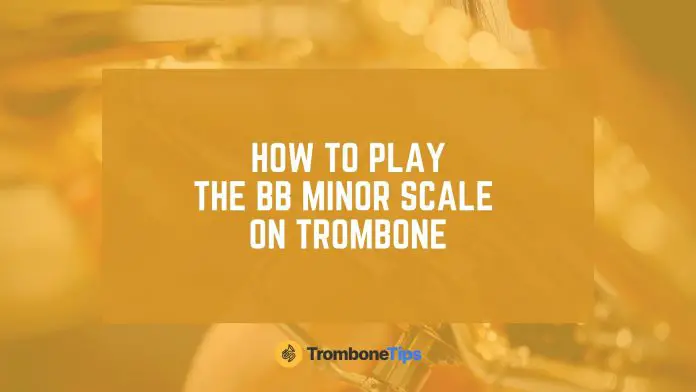How to Play: the Bb Minor Scale on Trombone
In this lesson, we will learn how to play the Bb (B flat) minor scale on the trombone. Scales are an important part of every musician’s training and form the basic building blocks of most music. Despite being a crucial part of grade exams, easy marks are often lost due to poor preparation of scales.
*T = Trigger/Valve/F-attachment TT = Both F and Gb valves (bass trombone)
Here are some tips on how to play the Bb minor scale on the trombone:
- Know the notes: The Bb minor scale consists of the following notes: Bb, C, Db, Eb, F, Gb, and Ab. Make sure you know these notes well before attempting to play the scale.
- Set up your embouchure: Start by setting up your embouchure. The embouchure is how you position your lips, tongue, and mouth on the mouthpiece to produce sound. Make sure your lips are firm and your tongue is relaxed.
- Start with the low Bb: Begin by playing the low Bb, which is the lowest note on the trombone. This note is played in the first position, which means the slide is fully retracted.
- Move to the next note: The second note of the scale is C, which is played in the second position. Move the slide out slightly to reach the correct position.
- Keep moving up the scale: Continue moving up the scale, playing each note in the correct position. Remember to keep your embouchure firm and your tongue relaxed.
- Use a metronome: To ensure you are playing the scale at the correct tempo, use a metronome. Start at a slow tempo and gradually increase the speed as you become more comfortable with the scale.
- Practice regularly: As with any musical skill, regular practice is essential to improve. Set aside time each day to practice the Bb minor scale, and gradually increase the tempo and accuracy of your playing.
- Experiment with dynamics: Once you are comfortable with the scale, experiment with different dynamics. Play the scale softly and gradually increase the volume, or start loudly and gradually decrease the volume.
- Use a tuner: To ensure you are playing each note accurately, use a tuner. This will help you to identify any notes that are out of tune and make adjustments to your playing.
- Record yourself: Record yourself playing the Bb minor scale and listen back to the recording. This will help you to identify any areas where you need to improve and make adjustments to your playing.
Tips
The high F will need to be flattened slightly because it is a 6th harmonic. Be sure to listen very carefully to get the intonation entirely correct.
For many bass trombonists, the simple major 2nd between pedal Bb and bottom C can feel like a huge obstacle. This is a transition that will take lots of dedicated work to smooth out and you just have to be patient with it!


